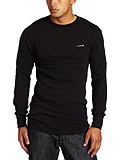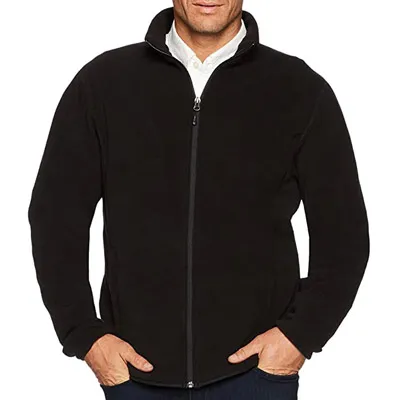Cold Weather Work Clothing
What to Wear Working Outside
in the Winter
If you spend whole or part days outdoors exposed to the elements, or in cold, unheated, covered spaces, here are some practical principles to apply to stay warm and work effectively without breaking the bank.

Layering is about different layers doing different jobs. To be comfortable and effective in cold conditions, a little planning and strategic buying is more effective than simply throwing more clothes on. The idea of layering to keep warm is often misunderstood to just mean lots of layers, 3 cotton shirts for instance isn't going to do the trick, they are not a good material for insulation, won't sit too comfortably on each other and lead to a build up of sweat.
For protracted and serious cold - Thick long underwear is used as part of your layering system for extreme cold conditions. Synthetics or merino wool are the better options as they wick moisture away from the skin to outer layers and provide better insulation, cotton is best avoided, though is a safety requirement for some occupations - the only time you should consider using it. Synthetic Merino Wool
- the gold standard, the best insulation and naturally
odor resistant Heavy weight cotton underwear - only recommended if required by hazard exposure to electricity or fire.  For
less cold conditions -
a thin thermal base layer with your usual clothes on
top for appearances sake can add significant warmth.
This is a relatively cheap way of adding further insulation
and of course because it's invisible to everyone
else you don't need a whole range of colors or styles
to go with your other clothes. Pick dark or light accordingly
so as not to show through the outer layers. For
less cold conditions -
a thin thermal base layer with your usual clothes on
top for appearances sake can add significant warmth.
This is a relatively cheap way of adding further insulation
and of course because it's invisible to everyone
else you don't need a whole range of colors or styles
to go with your other clothes. Pick dark or light accordingly
so as not to show through the outer layers.Light-weight thermal underwear, easy care, non-bulky insulation for cold conditions Women's | Men's Foundation layer of silk - in a complimentary or contrasting color if partly visible, good insulation Women's | Men's |
|
Mid Insulation Layers
- A main insulating layer/s,
flexibility is important for changing conditions with
adjustable ventilation during exertion and the ability
to close-up vents when it gets properly cold.
Lower body - Thick warm pants of lined cotton duck or heavyweight synthetic material such as polyester/cotton. Personally I have worn moleskin pants (a kind of cotton, named for its texture and nothing to do with animals) in both polar regions and wouldn't consider wearing anything else, for warmth, comfort and practicality they have no rival. Pants should be somewhat loose fitting, too close a fit will affect circulation and make you feel colder while leaving no room for thermal underwear. Bibs and overalls are particularly good here, they add extra insulation to the torso and keep you covered while bending or stretching. Insulated bib overalls -
Men's
Women's
Soft insulating garments aren't wind or water-proof enough on their own in cold conditions and you will need a shell garment as well if outside at all, you might not need it all the time, but when you do, you'll be glad you're no longer wet or frozen by the wind trying to get by without.
Winter shirts -
Men's
Women's |
|
The Outer or Shell Layer
- Front line protection from the weather,
this layer needs to be windproof and may be waterproof.
It could be simply a "shell" with no additional
insulation or it may have insulation built in. Jackets
should always have hoods. If the cold is not so extreme, or if you wear extra layers underneath when it is very cold, an uninsulated shell is a good choice as it can be worn year-round and possibly also as a waterproof in the warmer months. Being static for any length of time in extreme cold however means that you'll need the shell layer to be insulated too. Waterproof isn't always essential if snow rather than rain is going to fall. Like the insulating layer/s the outer layer should have features such as draw-cords and cuffs that can close over the tops of gloves to prevent warm air being pumped out with movement.  Caterpillar Men's Heavy Insulated Parka Tough outer, synthetic insulation, Regular and Big and Tall sizes  Carhartt Men's Yukon Extremes Insulated Coat Tough outer, Regular and Big and Tall sizes  Carhartt Men's Loose Fit Duck Insulated Traditional Coat Tough heavyweight cotton outer, sherpa-lined  Ergodyne Standard Duck Canvas Winter Work Jacket, Sherpa Fleece Lined Alternatives
|
|
Protect the Extremities - head, hands and feet and the in-between bits, ankles, wrists and neck. Head "When your feet
are cold, cover your head" - Inuit saying
Styles and materials. I favor synthetic materials over wool for comfort and fit, less itchy and less likely to go out of shape. A beanie type hat is very effective and should reach over the ears or have ear flaps that can be folded up if not needed. A clean, plain shape enables the hood on your shell layer to be pulled over and fit closely, a bobble on top of the hat will give an air space that will make the combined insulation less effective. A personal favourite is a close fitting "windstopper" hat with ear flaps, small enough to easily fit in a pocket with a warmth far beyond what you'd expect for its size and weight. Balaclavas are very useful and versatile, they can be rolled up as a hat or pulled down to cover the face and neck. Hats - Beanies | Hard hat liners | Balaclavas | Windstoppers Feet - Insulation from the cold ground is as important as insulation from the cold air
 One
or two pairs of thick insulating socks, wool
provides the best insulation, make sure they are predominantly
wool, 70%+, a smaller amount of synthetic material
such as nylon or polyester helps durability and some
stretchy material like elastane gives a snug fit and
prevents them from falling down. Don't be tempted
to wear too many pairs of socks and make your boots
tight, if you squash out most of the air, you will have
lost the main insulator and they won't be so warm.
Start with a thin inner pair, then a thick wool pair
inside insulated footwear with an extra thermal insole
if the boot sole needs it. One
or two pairs of thick insulating socks, wool
provides the best insulation, make sure they are predominantly
wool, 70%+, a smaller amount of synthetic material
such as nylon or polyester helps durability and some
stretchy material like elastane gives a snug fit and
prevents them from falling down. Don't be tempted
to wear too many pairs of socks and make your boots
tight, if you squash out most of the air, you will have
lost the main insulator and they won't be so warm.
Start with a thin inner pair, then a thick wool pair
inside insulated footwear with an extra thermal insole
if the boot sole needs it.Thermal socks: Men and Women's Boots: Boots are essential in cold weather as they cover the ankles so reducing heat loss at a thinly insulated region. Thick insulated soles are as important as insulated uppers as a lot of heat can be lost through the only part of our body in contact with the frigid ground. Work boots for extreme cold conditions: Men's Women's  Carhartt 10" Pac Safety Toe Work Boot - Men's Waterproof, Insulated Boot
 Georgia Boot Lace-To-Toe - Men's Gore-Tex Waterproof Insulated Work Boot
Hands
Glove liners, lightweight gloves | Winter work gloves  Mittens
are more effective than than gloves at keeping your
hands warm, but of course mean less dexterity,
you can apply the layer principle here if appropriate
with a light inner glove that allows for good handling
abilities and then a thicker pair of mitts to pull over
the top. The outer pair should be wind-proof while water-resistance
is always very useful if handling damp materials. Mittens
are more effective than than gloves at keeping your
hands warm, but of course mean less dexterity,
you can apply the layer principle here if appropriate
with a light inner glove that allows for good handling
abilities and then a thicker pair of mitts to pull over
the top. The outer pair should be wind-proof while water-resistance
is always very useful if handling damp materials.Work mittens The issue with gloves when it gets colder is that the dexterity reduces as the insulation and thickness increases, despite what you may see claimed, there is no magical thin, ultra warm glove that is going to allow you full use of your hands down to minus stupidly cold, it's all a compromise.
The Neck Along with the head, the neck is often another often poorly insulated region. It is also a place where warmed air can be pumped out and lost to be replaced with cold air requiring warming up again. Both of these issues can be addressed with a scarf or "neck gaiter".
|

 Heavy
insulated parka
Heavy
insulated parka































 Hand
warmers
Hand
warmers